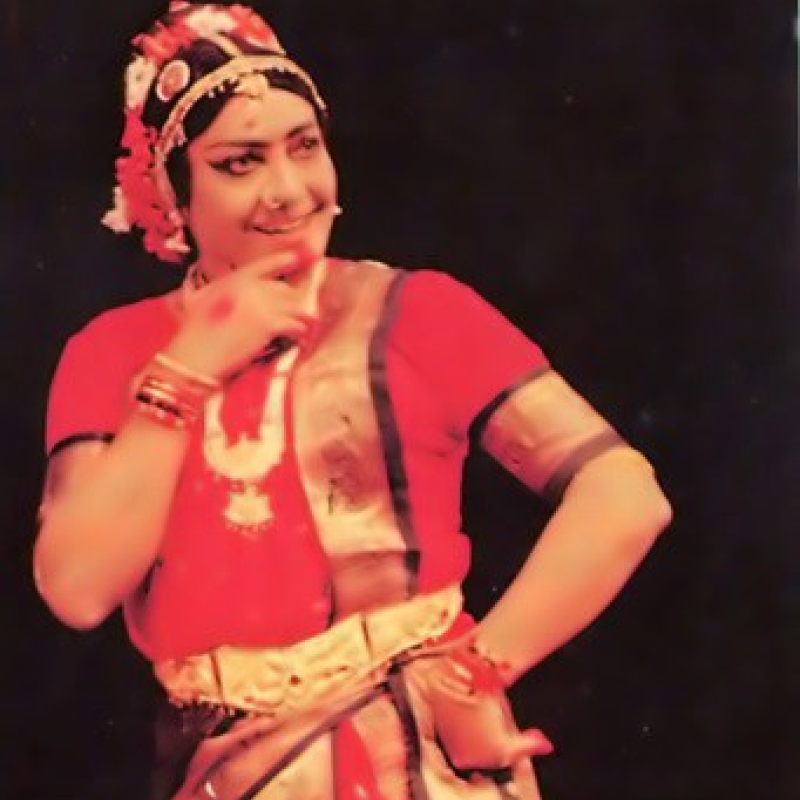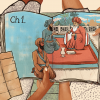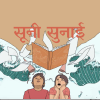Kuchipudi is one of the prominent Indian classical dances that originated in the states of Andhra Pradesh and Telangana. It evolved as a dance-drama, connected to temples and practised by men who did the stree veshas (female roles) as well. In the twentieth century, gurus like Vempati Venkatanarayana Shastri, Vedantam Lakshminarayana Shastri, Chinta Venkataramayya, etc., played key roles in the resurrection of this ancient dance form that had gone into decline, and in the process, many women were inspired to take it up.
This article discusses the aharya (expression through costume and scene) aspect of Kuchipudi.
The entire concept of Natya (dramatic element of the dance) revolves around the four principles of abhinaya, i.e. the Caturvidha abhinaya as prescribed in Bharata’s Natyashastra, they being, angika abhinaya, vachika abhinaya, aharya abhinaya and sattvika abhinaya.
Angika is the expression through limbs, vachika is the expression through speech, aharya is the expression through costumes, and sattvika refers to communication through emotions.
Aharya abhinaya is expression through costume, make-up, jewellery, etc., worn according to the character depicted by the dancer. The lighting, sound, decoration of the stage, usage of props—all fall under this abhinaya.
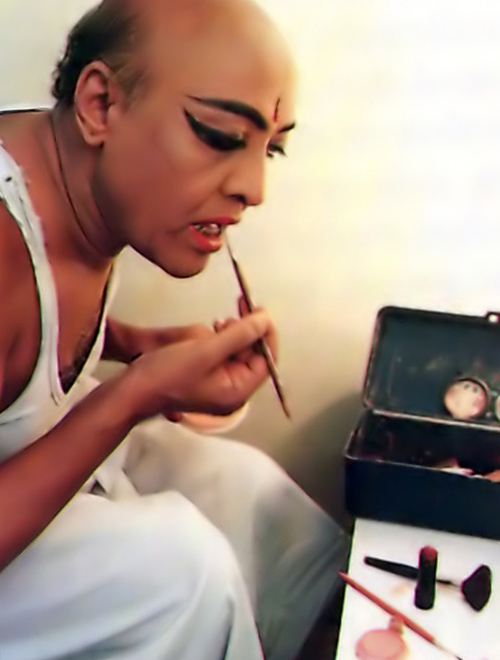
Bharata, in Natyashastra, dedicated the entire 23rd chapter titled ‘Aharyabhinaya’, literally meaning ‘costumes and make-up’, to this element of dance. Bharata gives detailed explanations of aharya in the chapter. He says that the appearance of characters on stage in right costumes alone will accomplish representation even before a word or an action is performed. Costumes, jewellery and make-up help the audience grasp what role is being played, the situation, the time period and so on. Thus, the external elements of communication like costumes, ornaments, make-up, properties, etc., are referred to as nepatya.
Below are the various types of aharya as explained by Bharata (Natyasashtra, Chap 23).
Aharya can be classified into four types—pusta, alankara, angaracana, sanjiva.
Pusta: Model work or the symbolic representations made out of cardboard or wood. Palaces, hills, armours, animals etc. that are used come under this category. This is further divided into:
a) Sandhima – the joined objects, those which are made by binding material together—like mat, leather, cloth, hide of animals, etc.
b) Vyaajima – the indicating objects. Here, a mechanical device is used to indicate the object, i.e. a yantra. For example, painted curtains being raised and dropped using a pulley.
c) Cestima – the moving objects. These are the objects that are made to move on the stage—e.g. boats, horses, carriages, simhaasanas (thrones), palanquins, etc. These are objects that can be moved in and out of the stage.
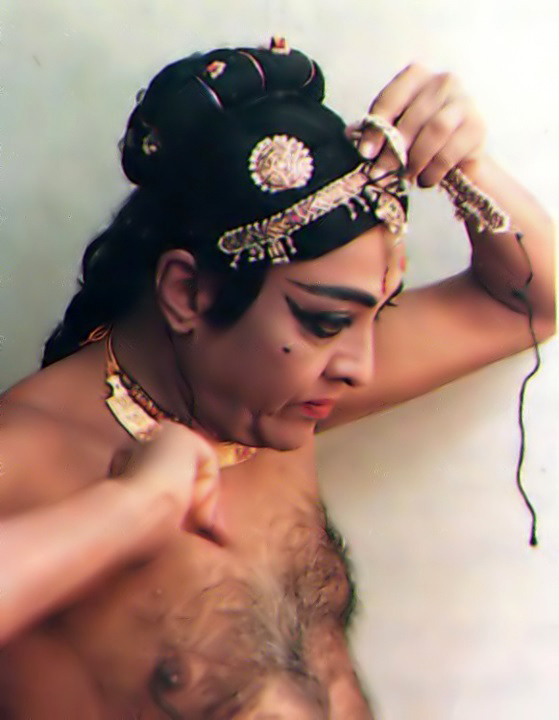
Alankaara: Decorations with the help of flowers and ornaments are called alankaara. They specifically refer to two types of attachments, one with flower garlands and the other with ornaments. The decorations with flower garlands are of five types:
a) vestima – those encircling the body or pillars, etc.
b) vitata – those that are done by spreading of flowers.
c) sanghaṭya – flowers being grouped together.
d) granthima – the ones which are knotted.
e) pralambita – flower garlands which are hung down.
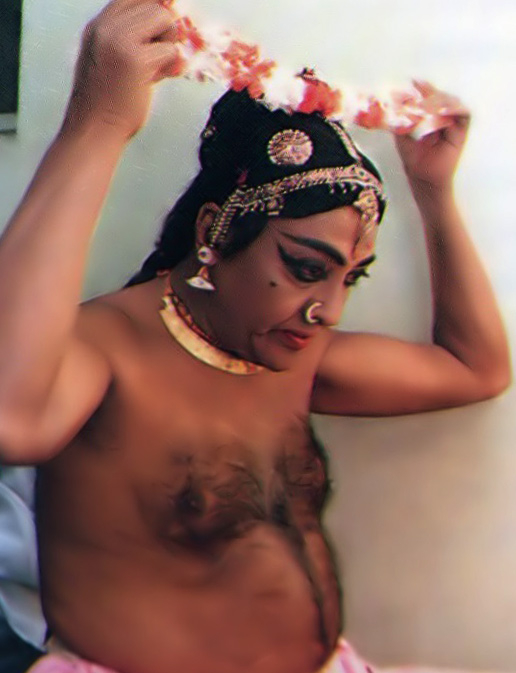
The ornaments used by the dancers are of four types:
a) avedhya – ornaments that are fixed by piercing the body, like earrings.
b) bandhaniiya – ones which are tied around the limbs like girdles and armbands.
c) praksheepya – ornaments which are worn, like anklets.
d) aropya – the ones that are to be put around, like necklaces.
Angaracana: This refers to the painting of limbs to suit various characters. Four primary/natural colours—black, blue, yellow and red—are used. Secondary or derivative colours created by combining primary colours are also used. They are karandava (bluish white), padma (lotus), kasaya (dark red) and so on. Colours suitable for the characters like gods, Yakshas, Varuna, Ganga, Rudra, Agni and more are also given by Bharata.
Sanjiva: This refers to living creatures. Bharata calls the entrance of animals on stage ‘sanjiva’. Animals can be four-footed, two-footed or without feet. The use of various weapons like spears, spikes, bow and arrow, mace, etc., also fall under this category. Use of objects like umbrellas, staff, masks and other accessories are also explained in detail.

Bharata lists a host of ornaments separately for men and women which are to be used as and when necessary, per traditions and regional variations. The earliest reference of jewellery is attributed to Lord Shiva; for whom the star and the moon act as hair accessories, the snake as his necklace, chains made of the holy rudraaksha beads, and the tiger skin as his girdle. One of the most charming aspects of Kuchipudi is its stree vesha. Though the purusha vesha or male role is grand in itself, the splendour of the costumes and ornaments of the stree vesha takes the dance to another level.
Let’s take the example of Bhama Kalapam, one of the important Kuchipudi dance-dramas. It tells the story of Queen Satyabhama, Lord Krishna’s wife.
Satyabhama, the daughter of the wealthy king Satrajita, is known for adorning herself with unique and beautiful jewellery. One chapter describes how Bhama agonises over her marital discord. Her maid Madhavi offers to bring Krishna to her, but on the condition that the queen gifts her one of her jewellery as a token fee. Bhama offers her ornaments that adorn her body from hair to toe one after the other.
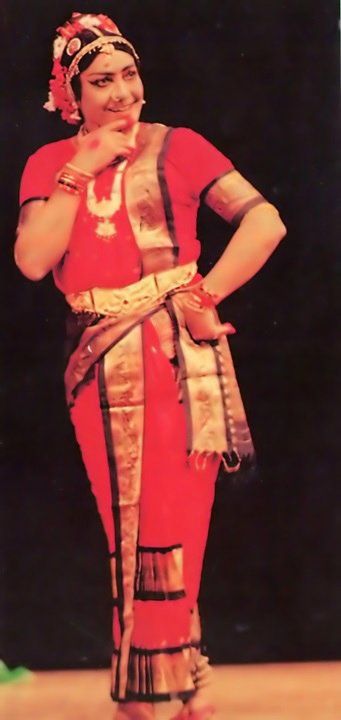
She starts with her netti cutti, the beautiful jewel that adorns her head and keeps her long locks intact. Moving down, she offers her sparkling jumki (known as kunḍala in the Natyashastra) or earrings which are so big and bright that one can see it sparkling even in the dark.
She then offers the maid all varieties of necklaces and chains which include candrahara, the pearl chain, the sarpamaala (snake design), the satladi, all inlaid with precious gems and stones. She further offers the magnificent girdle adorning her slender waist. She then offers the anklets around her doe-like feet, which jingle like sweet drops of morning’s first dew drops. Seeing that her servant is impressed with none of these, she finally offers the bhama jadalu or the ‘pride of Satyabhama’, the intricate piece of jewellery which beautifies her snake-like braid. But leaving behind all these, the servant is attracted, particularly, towards the beautiful mugutti or the mungura (nose ornament) which is one of the most important charms denoting the prowess of a married woman. Giving that away is equivalent to losing one’s dignity. But Bhama is so desperate to get her beloved back that she budges, gives in, and gives away her precious mungura.
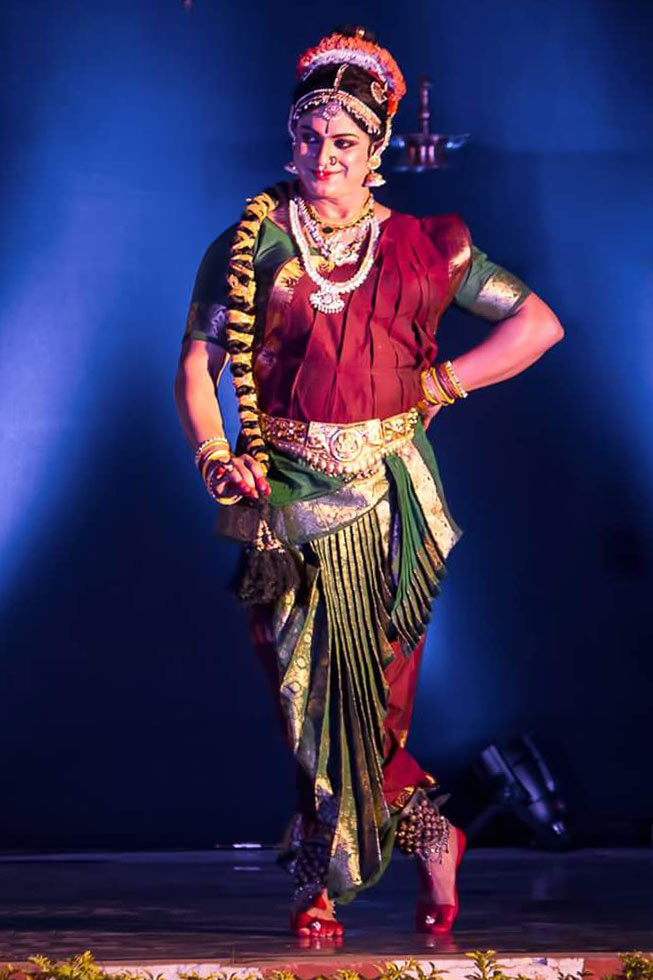
Apart from this, there is also an exhibition of the grand ‘Hamsatulika talpam’ or the bejewelled swan bed, the precious ‘leekha’ or the letter of love and the beautiful quill with which it is written, the royal swing, etc.—which act as properties for a stage performance in this episode. These are also important aspects of aharya abhinaya.
In this single episode, one can visualise the prominence of the aharya abhinaya, and the adornments, in particular, of a stree vesha Kuchipudi artiste.
Bibliography
Bharata. Natyasastra: Text with Introduction, English Translation and Indices in Four Volumes, edited by N.P. Unni. New Delhi: Nag Publishers,1998.
